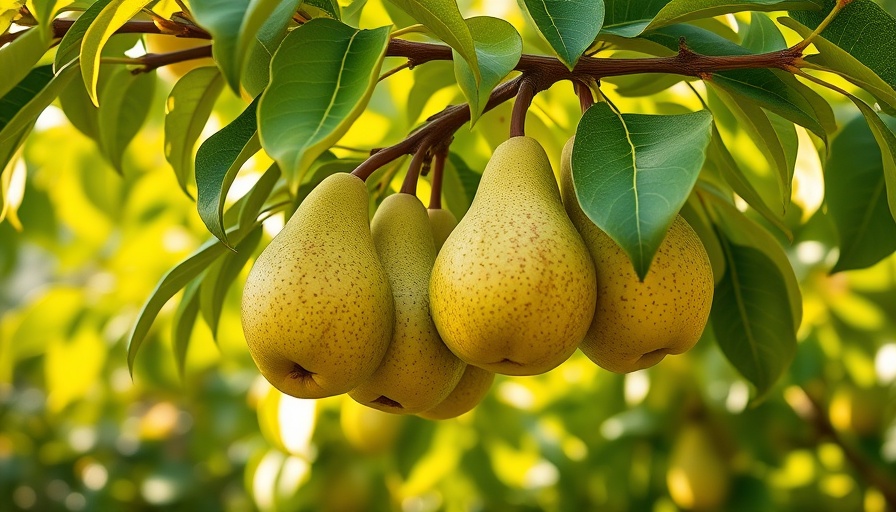
Understanding Pear Tree Chill Hours for a Bountiful Harvest
Pear trees thrive in regions blessed with chilly winters, requiring a specific number of cold hours to reproduce. This idea of "chill hours" may seem puzzling, especially if one prefers to snuggle under a blanket during the colder months. However, for fruits like pears, such cold exposure is vital, ensuring that trees can produce a fruitful yield in the spring.
What Are Chill Hours?
Chill hours refer to the duration a tree must spend at temperatures of 45°F or lower to break dormancy. For pears, this typically amounts to about 1,000 chill hours. It's essential to clarify that this doesn't mean a continuous 1,000 hours—rather, it can be accumulated in smaller increments across multiple days. This flexible requirement provides trees with the ability to adapt to fluctuating winter temperatures.
Why Chill Hours Matter
The evolutionary necessity of chill hours can be explained by the potential harm of breaking dormancy too soon. If pear trees were to blossom before winter's end, the resulting flowers would be vulnerable to frost damage, leading to an unsuccessful pollination. Hence, chill hours act like a natural clock, signaling to the tree that it is time to awake from its wintry slumber.
Strategies for Creating a Thriving Pear Orchard
To achieve an abundant harvest, gardeners should consider several factors beyond simply counting chill hours:
- Choosing the Right Cultivar: Not all pear varieties have the same chill hour requirement. Research local growing conditions and select cultivars that are well-adapted to your climate.
- Implementing Effective Pruning: Properly pruning your trees can encourage better air circulation and sunlight exposure, both of which contribute to healthy growth and fruit production.
- Monitoring Soil Health: Ensure your soil has adequate nutrients and organic matter. Soil testing can help determine if your plants need supplements or adjustments.
Connecting Chill Hours to Broader Gardening Practices
Understanding chill hours isn't just important for pear trees—it applies to many fruit varieties. Solidifying knowledge about these requirements helps in a broader gardening context, allowing enthusiasts to cultivate diverse gardens that are successful year-round.
Real-Life Application: A Successful Pear Garden
Imagine a backyard bursting with pear trees, laden with ripe fruit in the summer. By planning appropriately and recognizing chill hour requirements, a gardener can transform that vision into reality. Utilize raised garden beds to ensure better drainage and soil health, incorporate companion planting techniques to deter pests, and establish organic gardening practices to thrive sustainably.
Final Thoughts on Gardening and Chill Hours
Whether you're a novice or a seasoned gardener, understanding the importance of chill hours is vital to your success. Knowledge empowers you to create an environment where pear trees—and many other fruit trees—can thrive. Prepare your garden now, and reap the rewards of your efforts come harvest time. Happy gardening!
 Add Row
Add Row  Add
Add 




Write A Comment